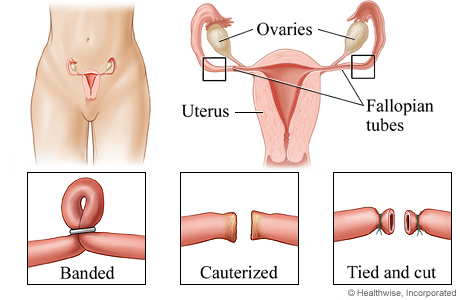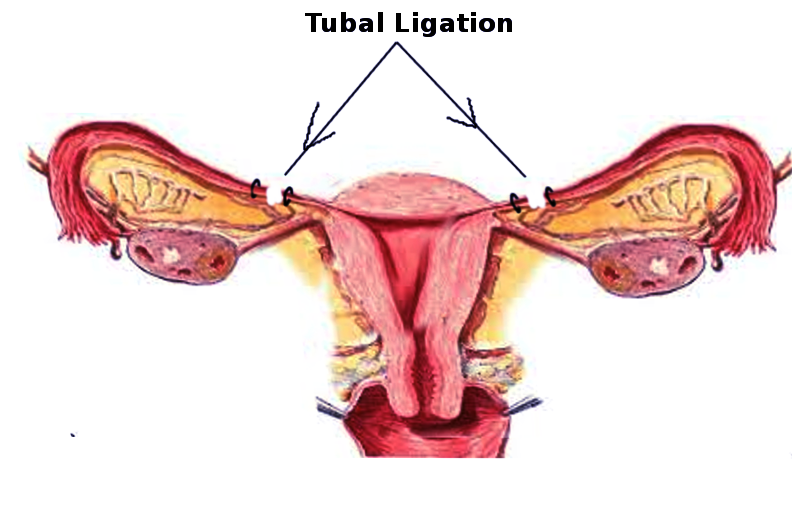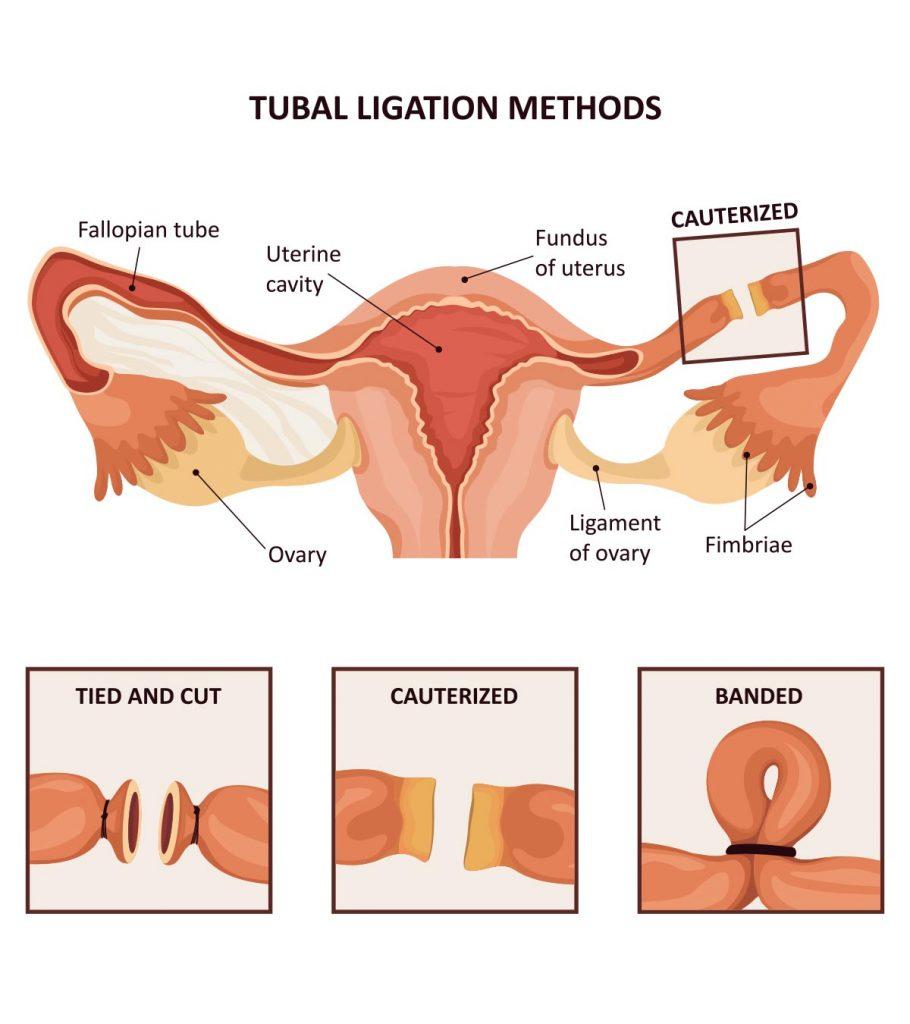Describe the Process of Tubal Ligation
The physician can also completely remove the tube. What is a tubal ligation.

Cesarean Section With Tubal Removal Salpingectomy Or Tubal Ligation My Doctor Online
Its a sterilization making someone unable to have kids technique commonly referred to as getting your tubes tied even though theres no tying involved.

. The surgery is sometimes referred to as female sterilization or getting your tubes tied. During conception the ovaries release the eggs into the fallopian tubes. The fallopian tubes are located in the lower abdominal pelvic area.
This prevents sperm from traveling up the tubes and an egg from traveling down. Women who have a tubal ligation still get regular periods. Eggs travel from the ovaries.
During a tubal ligation doctors close the fallopian tubes to prevent sperm from fertilizing the egg. Youll need either epidural spinal or general anesthesia and it may require a hospital stay. Bilateral salpingectomy is a surgical.
Tubal ligation commonly known as having ones tubes tied is a surgical procedure for female sterilization in which the fallopian tubes are permanently blocked clipped or removed. Tubal ligation is surgery to tie the tubes fallopian tubes of a woman which causes permanent sterility by preventing transport of the egg ovum to the uterus. Ligationmeans to tie off.
This type of tubal ligation is often referred to as cut tied and burned. These are usually very good for reversal. Its usually done through small incisions in the belly.
Tubal ligation doesnt cause. Sometimes the surgeon makes a small incision in your lower abdomen as. Doctors also call it salpingoclasia.
Fallopian tubes are thin tubes that connect each of your ovaries to your uterus -- theyre passageways for unfertilized eggs. The fallopian tubes are the passages that connect your ovaries with your uterus. It is a form of permanent birth control for women.
Tubal ligation is a surgical act that consists of closing the transit of the womans fallopian tubes. Tubal ligation surgery is an elective procedure that involves cutting sealing clipping or tying off the fallopian tubes which connect the ovaries to the uterus to prevent sperm from reaching an egg. Tubal ligation prevents fertilization from occurring.
They protect you from pregnancy around the clock for the rest of your life. Tubal ligation is a one-time procedure that is considered permanent. What happens during a tubal ligation.
Recovery can take about a week and you wont be able to have sex for up to 2 weeks. Usually the loop is cut and the ends cauterized or burned. Tubal ligation is a surgical procedure that blocks or removes your fallopian tubes which carry eggs from the ovaries to the uterus.
In a tubal ligation youll. Tubal ligation Tubal ligation is surgery to close a womans fallopian tubes. Recovery time following a tubal.
Tubal sterilization is also called tubal ligation. The surgeon will make one or more small cuts incisions near your belly button. Tubal ligation or having your tubes tied is a surgical procedure that provides permanent birth control for women.
A tubal ligation involves surgically cutting or blocking both fallopian tubes so a mans sperm cannot reach a womans egg and fertilize it to begin a pregnancy. During a tubal ligation the OBGYN cuts clips or burns the fallopian tubes. Overview of tubal ligation Tubal ligation is a surgical procedure for women who wish to prevent pregnancy permanently.
Theyre both designed to be permanent and you cant mess it up. Tubal ligation is a form of female sterilization in which a doctor or surgeon blocks or removes the fallopian tubes to prevent pregnancy permanently. The sperm enters the vagina uterus and then fallopian tubes to fertilize the egg.
A woman who has this surgery can no longer get pregnant. It is a contraceptive method since without transit in the fallopian tubes the sperm cannot get to fertilize the ovum. Gas may be pumped into your belly to inflate it.
This means she is sterile Description Tubal ligation is done in a hospital or outpatient clinic. Tubal ligation is a method of permanent sterilization. Tubal ligation may be recommended for adult women who are certain that they wish to prevent future pregnancies permanent sterilization.
Tubalrefers to the fallopian tubes. During tubal ligation the tubes are cut or blocked in order to close off the sperms access to the egg. Tubal ligation is a surgical procedure to prevent pregnancy.
The only difference is that vasectomies dont work right away. Tubal ligation procedures typically take less than an hour to complete and do not require an overnight. It has commonly been called getting your tubes tied It is also called female sterilization.
In this method of tubal ligation a loop of tube is strangled with a suture. Normally tubal ligation takes about 2030 minutes and is performed under general anesthesia spinal anesthesia. Those who have completed childbearing and desire a non-reversible contraceptive option are candidates for tubal ligation.
This prevents the egg and male sperm. Removal of the Fallopian tubes or salpingectomy has been advocated as a method for the prevention of ovarian cancer. What is tubal ligation.
Each month an egg is released from an ovary and travels through the fallopian tube to the uterus. The fact that the ends are burned doesnt matter because that part is going to. The primary indication for tubal ligation is the desire for permanent sterilization.
It is sometimes called tying the tubes The fallopian tubes connect the ovaries to the uterus. This prevents the fertilization of eggs by sperm and thus the implantation of a fertilized egg. This gives your surgeon a.
It is within the fallopian tube that fertilization the joining of the egg and the sperm takes place. Tubal ligation and vasectomies are both more than 99 effective at preventing pregnancy. Tubal ligation is a surgical procedure that permanently closes cuts or removes pieces of your fallopian tubes.

No comments for "Describe the Process of Tubal Ligation"
Post a Comment